#common toucan
Explore tagged Tumblr posts
Photo
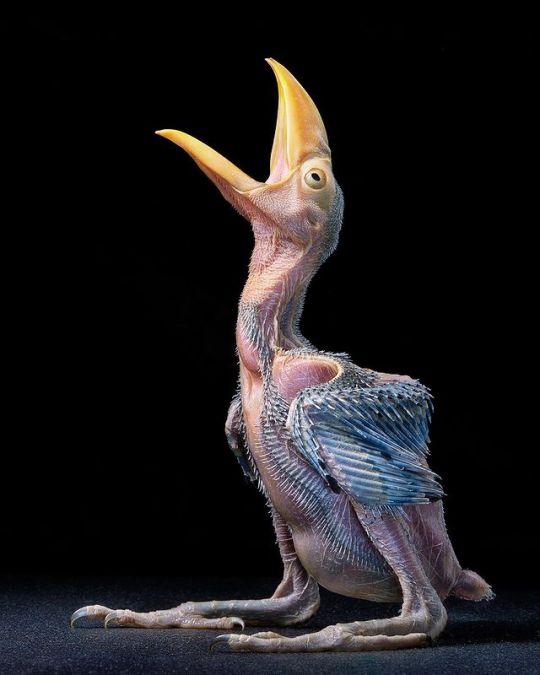
Toco Toucan
#toco toucan#toucan#common toucan#giant toucan#Ramphastos toco#Piciformes#Ramphastidae#Ramphastos#bird#upl
196 notes
·
View notes
Text


birds sitting flat is the best thing ever actually so have some ms paint birbs (sizes based on vibes, we stay silly)
#digital art#pixel art#birds#okay here we go#bearded vulture#rock dove#red crossbill#rose breasted grosbeak#turkey vulture#white backed woodpecker#anna's hummingbird#herring gull#great tit#house sparrow#euroasian jay#blue jay#tufted titmouse#kiwi bird#toco toucan#american woodcock#european robin#common raven#blue winged kookaburra
134 notes
·
View notes
Text
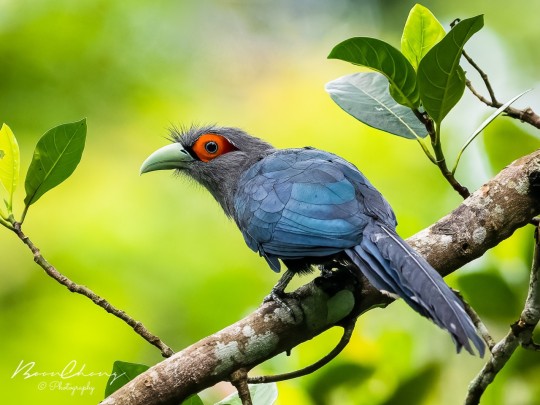

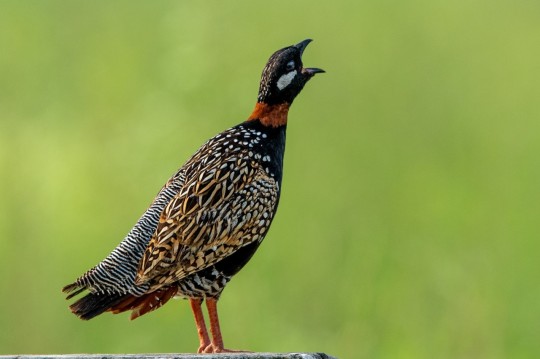



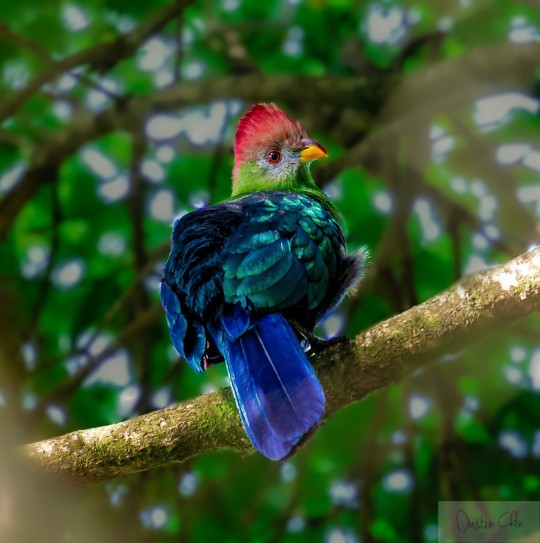


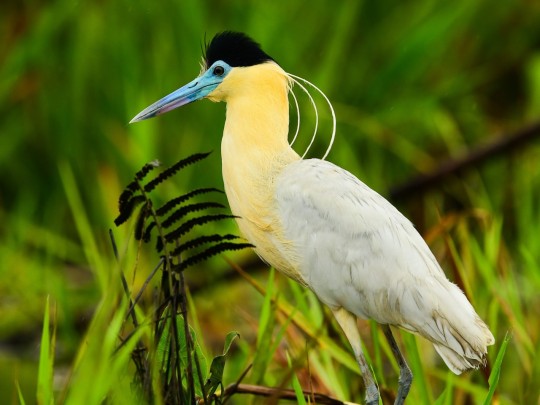


First 25% Summary - Part 2 (Cuculiformes to Piciformes, excluding Passeriformes)
Cuculiformes: Chestnut-bellied malkoha - Boon Chong Chen Falconiformes: Barred forest falcon - Andres Vasquez Noboa Galliformes: Black francolin - Vivek Saggar Gaviiformes: Common loon - Annie Lavoie Gruiformes: Black-tailed nativehen - John Daniels Mesitornithiformes: Brown mesite - Chris Courtaux Musophagiformes: Bannerman's turaco - Dustin Chen Nyctibiiformes: Andean potoo - Andres Vasquez Noboa Otidiformes: Buff-crested bustard - Luke Seitz Pelecaniformes: Capped heron - Xueping & Stephan Popp Phoenicopteriformes: Andean flamingo - Claudio Martin Piciformes: Channel-billed toucan - Silvia Faustino Linhares.
#birds#summary post#described#chestnut-bellied malkoha#barred forest falcon#black francolin#common loon#black-tailed nativehen#brown mesite#bannerman's turaco#andean potoo#buff-crested bustard#capped heron#andean flamingo#channel-billed toucan
96 notes
·
View notes
Note
How many birds can you identify? By sight, by sound, by environment, it doesn’t matter which.
In the wild, I can recognize mockingbirds, cardinals, crows, and mourning doves by call! I can recognize those plus blue jays, roadrunners, and hummingbirds by sight! Oh, and grackles as well (they're everywhere in Texas!)
#Bird#Those are probably the most common ones I can recognize! That and some owls like the great horned owl#and ofc I can recognize birds in the zoo like toucans parrots and eagles!
2 notes
·
View notes
Text




#adult collectors#adult collectibles#collectables#figures#funko#funko pop#pop ad icons#toucan sam#common#chase#metallic#kelloggs#cereal icons#funko shop exclusive#limited edition#1000pcs#13
2 notes
·
View notes
Text
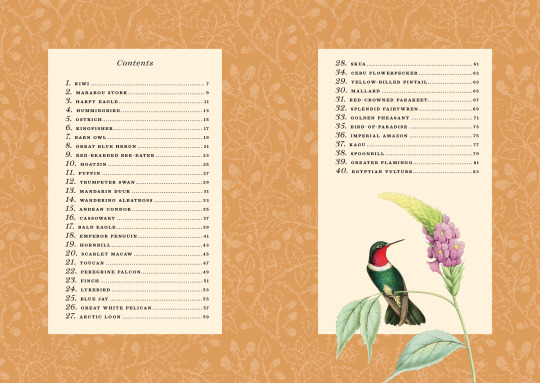

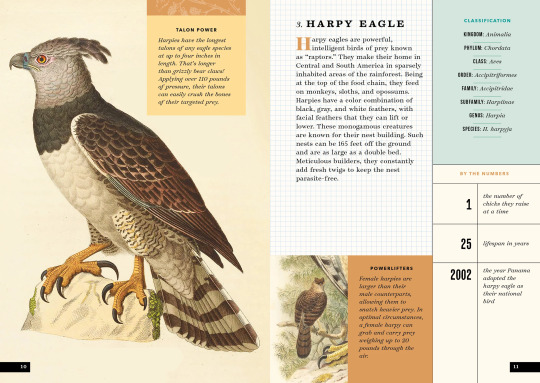
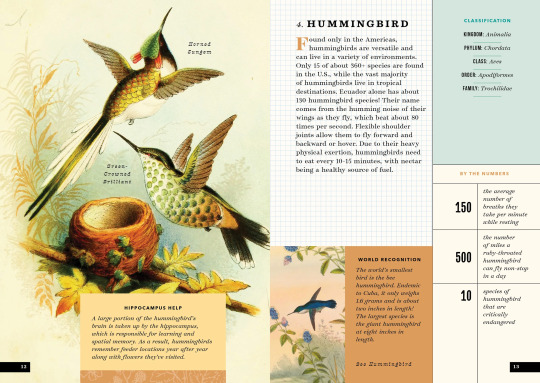



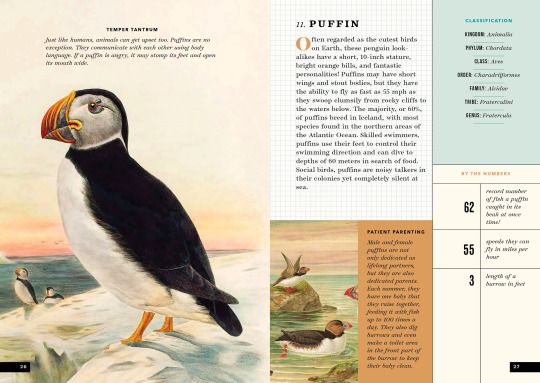
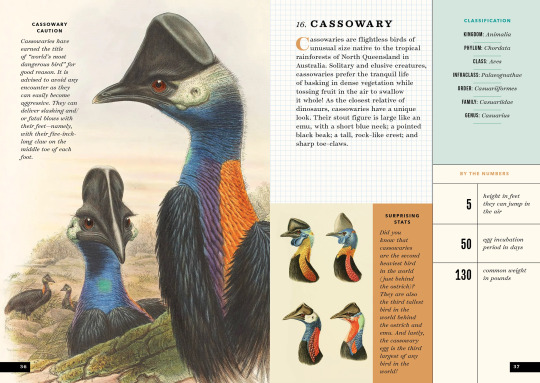

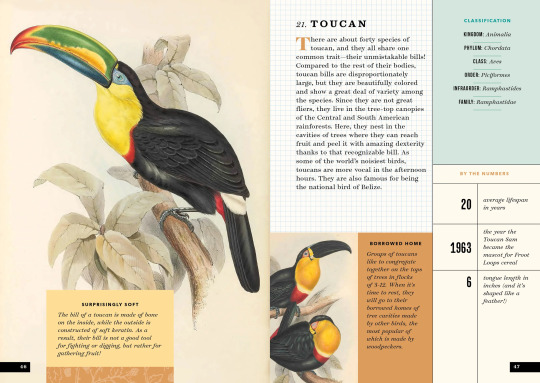


Pages from The Little Book of Birds of the World, by Christin Farley.
#art#books#birds#kiwi#harpy eagle#hummingbirds#horned sungem#green-crowned brilliant#common kingfisher#barn owl#red-bearded bee eater#puffin#cassowary#emperor penguin#toucans#lyrebird#golden pheasant#design
1 note
·
View note
Text











image credits:
emperor penguin, flamingo, toucan, scarlet macaw, african grey parrot, southern cassowary, secretary bird, swordbilled hummingbird, common potoo, cock of the rock, frigatebird
24 notes
·
View notes
Note
I feel like Ollie did have something to do with it (he bribed the F1 drivers to come watch Princess Paul)
Speaking of Zac! He's such a smiley and fast guy, I feel like his s/o would be something like a capybara...
Oh, and someone (looking at u Jack Doohan) probably has a gf who's a tasmanian devil...
AND AND let's talk about Franco! He probably has an Argentinean bird, like a toucan. Bonus points if she's a Pokemon fan and preens because she considers herself Toucanon 🤣
I feel like the F2 shapeshifting wags are more open to each other? Like they're all friends with each other, and they go on girl dates and stuff!
- 🐺
no matter how much paul accuses ollie, the latter would always act innocent (he definitely did bribe them)
my thoughts under the cut (i don't want to clog the feed lmao)
LMAO i don’t know why the first zac i thought of was zac brown and i was like oh-! um…. then i realized you meant zac o’sullivan haha
anyways i feel like a capybara would be a complete opposite of zak yk? in all those capybara vids they’re always so nonchalant and dare i say- demure. total opposite of zac’s outgoing and smiley personality. but like they say, opposites attract 🤷🏻♀️ you can find zac energetically walking around the paddock with his capybara held like a baby in his arms. one place you’ll never find her though- anywhere near the ice baths. if you even suggest getting near one she’ll be sure to pummel you, because we all know capybaras love their hot spring baths.
tasmanian devil? sure thing. she's not afraid to get aggressive if she sees someone bothering her bf. better watch out when she starts baring her teeth and hissing, because she will not be holding back on that bone-crushing bite. only jack sees her soft and cuddly side where she noses his arms when she is feel particularly clingy and looking for some love.
mhm, a toucan would be interesting! other animals that are native to argentina would be possible too, like chinchillas and boobies (the bird). from the interviews i've seen with franco being super charismatic, i feel like his girlfriend would get jealous easily and maybe give him a peck or nibble when she's feeling a little envious of where his attention is going. (i also see your toucanon reference but i'm not super familiar with pokemon, sorry 😭)
yes! the f2 wags are definitely well-acquainted with each other, due to their common attendance at their boyfriends' races. some of the girls have known each other for years, due to their boyfriends' connection throughout karting to the formula series. new wags are welcomed too- they never exclude anyone! sleepovers and double dates at coffee shops are commonly seen :)
26 notes
·
View notes
Text
Today's bird: toucan (@ghcstao3)
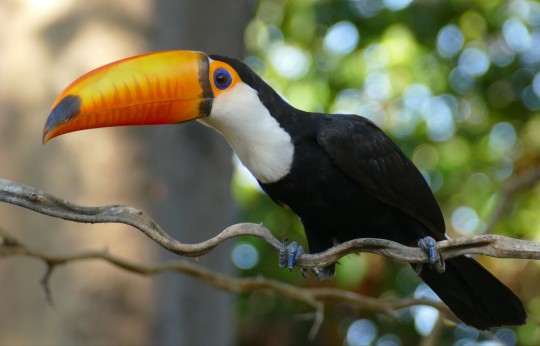



(Toco toucan, keel-billed toucan, aracari, channel-billed toucan)
There are 7 classifications of toucan
The most common is the Toco Toucan, you might recognize them as the Toucan from the movie Rio
Their beak (called a "bill") accounts for 50% of their length
They're omnivorous so they'll eat a variety of foods including small birds, rodents, fruit, ect.
They live in large groups/flocks, up to 22 individuals
They also mate for life
Their beak helps them regulate their body temperature, by controlling how much bloodflow they allow to the area
They are not great flyers, instead preferring to use their wings to glide between trees and branches when necessary
Tomorrow's birb: bleeding-heart doves
52 notes
·
View notes
Text
BLOGTOBER 10/14-10/15/2024: JUNGLE HOLOCAUST and HOLOCAUST 2000
For these two days I chose two Italian movies that featured the word "holocaust", end of the world scenarios, primordial caves, gross awkward sex, and Massimo Foschi. If you think I put a lot of thought into this, you'd be wrong! But one of these movies was a lot better than I expected, and one was much weirder, so that's a net positive.

If you heard the title JUNGLE HOLOCAUST and the name Ruggero Deodato in the same sentence, you might fairly assume that the infamous Italian director made a second movie about a white Westerner fighting off man-eating primitives to capitalize on the notoriety of his name-making 1980 video nasty CANNIBAL HOLOCAUST. But you would be wrong! Though to be fair, I'm not sure when his 1977 movie LAST CANNIBAL WORLD got that alternative title--like if it was for home video releases after 1980, or if JUNGLE HOLOCAUST really was Deodato's first "holocaust" title. I'm curious about the use of that word in exploitation movies in general; post-1980 genre films would certainly be trying to associate themselves with CANNIBAL HOLOCAUST, but what meaning did it have for exploitation producers in the 1970s? Obviously it was enough for two different groups (Erre Cinematografica, and Titanus and The Rank Organization, respectively) would put out JUNGLE HOLOCAUST and HOLOCAUST 2000 the same year. I'm not even sure how to estimate the place the actual-Holocaust held in the public consciousness at the time; it wasn't even a lifetime away in the '70s, but we know how the events of past decades can suddenly, crazily seem like literally-ancient history to younger people. The Frankfurt Auschwitz trials took place in the mid-60s, which I mention just to say that Holocaust-related legal processes were ongoing for some time. Evidence of ongoing processing in the collective unconscious can be found in the nazploitation boom of 1976-77; MARATHON MAN was '76 and THE BOYS FROM BRAZIL was '78.. JUNGLE HOLOCAUST and HOLOCAUST 2000 have little or nothing to do with the events of WWII, but so I don't know if that I've added anything meaningful with this rant; I'm just curious about it.

Um anyway. JUNGLE HOLOCAUST is a much better movie than you probably think it is. Massimo Foschi plays an oil prospector who gets stranded in Malaysia and captured by cannibals, whereupon he forces cavewoman Me Me Lai to help him fight his way back to civilization. Of course, it bears all the hallmarks of its fairly-maligned genre--extreme racial caricatures, extreme rape, extreme animal cruelty, and extreme gut-munching--but it's also surprisingly good, if you can eat around that stuff. Foschi's stay in the cannibal caves is like a Boschian fever dream, beautifully photographed with a fascinating soundscape to match, and there's a certain subversive power in the way the gleeful cannibals dominate Foschi--and by proxy, the viewer. Sadly I haven't been able to remember who, but one critic pointed out that the cannibal movies (of which JUNGLE is only the second, though really the first recognizable one) are usually sun-drenched affairs, which makes the chiaroscuro imagery of the cave quite unusual.

It's also worth saying that Foschi really lives this adventure. I mean of course he wasn't really kidnapped by cannibals, but he really spends the whole movie nude or nearly so, really braved the hostile jungle with its leech-infested waters for the shoot, really eats everything from beetles to putrid offal, really spars with an angry toucan. In a way JUNGLE HOLOCAUST has more in common with some forms of experimental theater than it does with a regular old exploitation movie. It is the real deal, and I recommend it if you have the stomach for it.

HOLOCAUST 2000, on the other hand, is like, all crazy. This is going to be spoilery, but probably the best way to discuss this movie is to tease out how convoluted it is. Kirk Douglas plays entrepreneur Robert Caine who plans to open a nuclear power plant near a sacred cave in Israel, amid protests and prophecies of doom. Foschi plays a madman who tries to kill him, in one of a series of events suggesting that the power plant is going to trigger the apocalypse described in the Book of Revelations. The plant itself, which seems semi-sentient, is likened to the Biblical Beast of the Sea with all its destructive power, and there's a pretty fun dream sequence about this...but then there's a separate prophecy about how Caine's seed (ew!) will beget the Antichrist, which presumably comes about when he knocks up a girl reporter (Agostina Belli), who then starts acting more or less like Damien in THE OMEN. But then also there's the matter of Caine's androgynous adult son Angel (Simon Ward), who strangled his twin brother in the womb, and there's some hemming and hawing about which twin embodied goodness and which one embodied evil, for whatever reason. So there's sort of two Antichrists in this movie? I don't know. There's a lot going on.

I don't feel great about this, but I cannot avoid talking about the graphic sex scene between 30 year old Agostina Belli and Kirk Douglas, who is 61 and looks even older. We all know that the entertainment industry prefers to take "an old American fossil and put it next to some young rising star," as Sergio Martino put it; I'm forever thinking about Maggie Gyllenhaal losing a role because she was told she was too old to play Clint Eastwood's girlfriend. But even so, I think we rarely or never see naked Clint Eastwood in bed with his too-young costars, and HOLOCAUST 2000 offers the startling and protracted spectacle of Kirk Douglas's wrinkly, hairy, mottled old fingers roving over Agostina Belli's young, poreless flesh. It's really intense and I don't know how the audience is supposed to feel about it exactly; the dialog occasionally concedes that she's too young for him, but it really feels more like he's too old for HER, and the prophecies about his "seed" made you think, you know, a guy in his 60s might not be able to give a woman a very healthy baby. That's a thing, whether we talk about it or not. But I really started to wonder if it would change anything if there were always graphic sex scenes in movies that have a male lead who is 50+ and a love interest who is 20 years or more his junior. If viewers always had to see the guy's aged body pressed against the dramatically different-looking woman, it might be a helpful visual representation of how problematic these casting decisions are. Like unless the story is really focused on how two people in love overcome a gap in age/experience/health/etc--or unless the story is specifically about gerontophilia--people should either stop doing this, or be more frank about what they're proposing.

#blogtober#2024#horror#adventure#sci-fi#science fiction#religious horror#cannibalism#jungle holocaust#last cannibal world#ruggero deodato#massimo foschi#me me lai#holocaust 2000#the chosen#1977#alberto di martino#kirk douglas#agostina belli#simon ward
7 notes
·
View notes
Text
Alrighty and HERE ARE OUR CONTENDERS!!!
Tag for the polls: #bird battle
DISCLAIMER - I wrote the round one blurbs when I was very sick and half awake, so if you see any mistakes PLEASE TELL ME! Nicely, obviously, but I want to make sure they sound good for round 2. Thank you!
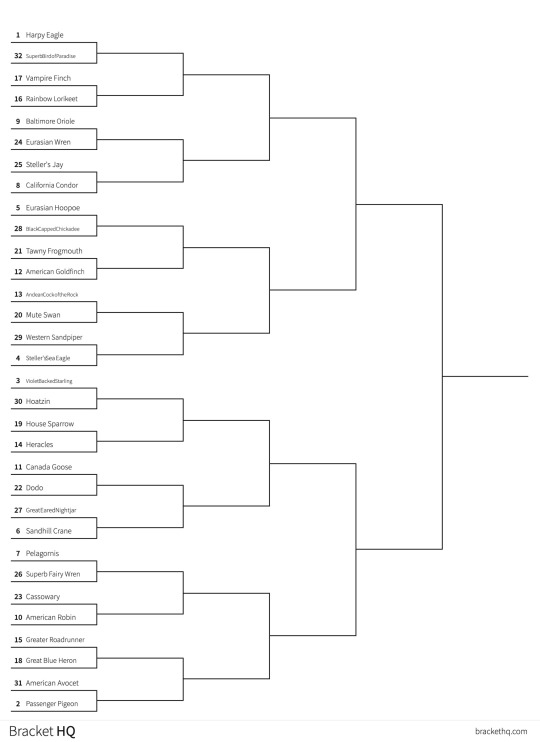

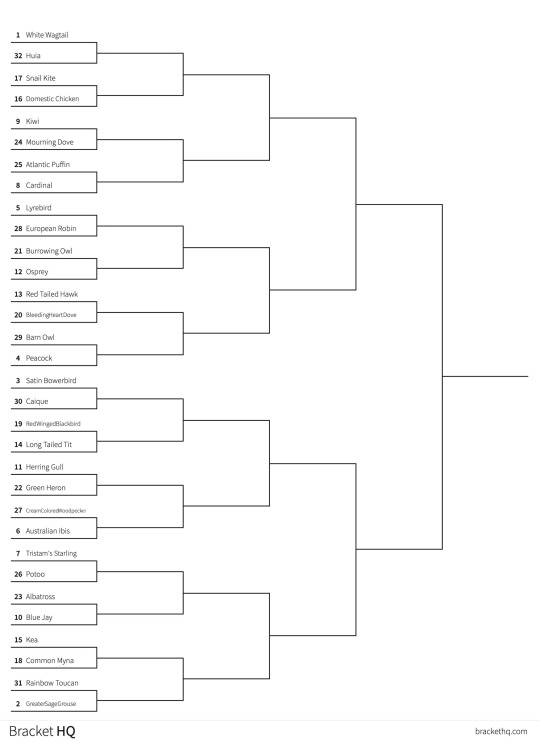

I know there’s a lot of them, but man there’s SO MANY GOOD BIRDS! There were a few times where people didn’t put what specific subspecies for some birds, so sometimes I’d have to choose one. I tried to choose one that represents that bird the best!
I don’t know when the polls will begin, I’m doing some research on the birds so that people can read about them before they vote.
If one of your favs didn’t make it in, don’t worry they’re a winner in my and your heart.
If you are wondering where the Pigeon (Rock Dove) is, THEY ARE THE FINAL CHAMPION! At the end of this bracket, the winner will face off against the mightily popular Rock Dove! Will they be able to beat such a tough challenger? We will see…
Also, a note on how I set this bracket up: I put all the birds in a numbered list and then used a number generator. I think the matchups we got were really interesting.
Full list under the cut
HARPY EAGLE
SUPERB BIRD OF PARADISE
VAMPIRE FINCH
RAINBOW LORIKEET
BALTIMORE ORIOLE
EURASIAN WREN
STELLER'S JAY
CALIFORNIA CONDOR
EURASIAN HOOPOE
BLACK CAPPED CHICKADEE
TAWNY FROGMOUTH
AMERICAN GOLDFINCH
ANDEAN COCK OF THE ROCK
MUTE SWAN
WESTERN SANDPIPER
STELLER'S SEA EAGLE
VIOLET BACKED STARLING
HOATZIN
HOUSE SPARROW
HERACLES
CANADIAN GOOSE
DODO
GREAT EARED NIGHTJAR
SANDHILL CRANE
PELAGORNIS
SUPERB FAIRY WREN
SOUTHERN CASSOWARY
AMERICAN ROBIN
GREATER ROADRUNNER
GREAT BLUE HERON
AMERICAN AVOCET
PASSENGER PIGEON
WALLCREEPER
GREAT TIT
MOA
EASTERN BLUEBIRD
AUSTRALIAN BUSHTURKEY
EMU
MALLARD DUCK
FLAME BOWERBIRD
MANDARIN DUCK
BELTED KINGFISHER
OILBIRD
FAIRY PENGUIN
LESSER FLAMINGO
AUSTRALIAN KESTREL
CARRION CROW
UMBRELLABIRD
LOGGERHEAD SHRIKE
PERUVIAN PELICAN
CALIFORNIA QUAIL
MACGREGORS BOWERBIRD
HARRIS HAWK
COMMON RAVEN
BEARDED VULTURE
PEREGRINE FALCON
ROSY LOVEBIRD
ROSEATTE SPOONBILL
LONG TAILED GRACKLE
AMERICAN WOODCOCK
KAKAPO
BLUE FOOTED BOOBY
RHEA
BEE HUMMINGBIRD
WHITE WAGTAIL
HUIA
SNAIL KITE
DOMESTIC CHICKEN
KIWI
MOURNING DOVE
ATLANTIC PUFFIN
CARDINAL
LYREBIRD
EUROPEAN ROBIN
BURROWING OWL
OSPREY
RED TAILED HAWK
BLEEDING HEART DOVE
BARN OWL
PEACOCK
SATIN BOWERBIRD
CAIQUE
RED WINGED BLACKBIRD
LONG TAILED TIT
HERRING GULL
GREEN HERON
CREAM COLORED WOODPECKER
AUSTRALIAN IBIS
TRISTAM'S STARLING
POTOO
WANDERING ALBATROSS
BLUE JAY
KEA
COMMON MYNA
RAINBOW TOUCAN
GREATER SAGE GROUSE
TURKEY VULTURE
TUFTED TITMOUSE
CRESTED AUKLET
EURASIAN MAGPIE
BUDGIE
SCREECH OWL
WIP-POOR-WILL
SECRETARY BIRD
AUSTRALIAN MAGPIE
CEDAR WAXWING
VICTORIA CROWNED PIGEON
HERMIT THRUSH
COMMON SWIFT
WHITE BELLBIRD
BROWN SKUA
EUROPEAN DIPPER
111 notes
·
View notes
Text
Fossil Novembirb 14: Lost in the Woods
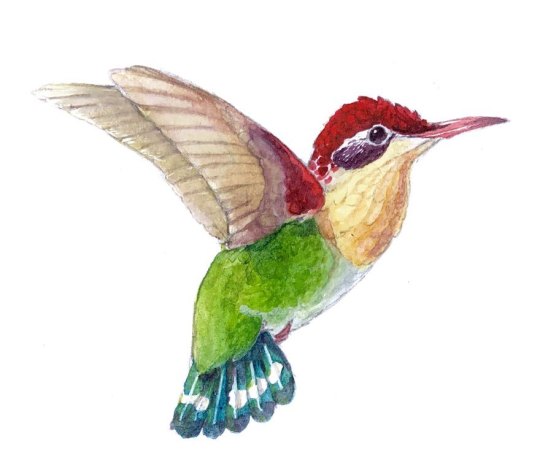
Eurotrochilus by @iguanodont
Even though parts of the landscape were opening up, the forests of Europe weren't done yet - in fact, many began transitioning to the drier temperate forests we know from Europe today! This transition through the Oligocene would have major consequences for bird evolution - I mean, why else would I bring it up? The formation of the first permanent ice sheets in Antarctica made the world drier, and in turn lead to many of the European Islands of the Eocene connecting with one another, forming an actual continent. Well, sub-continent.
So we saw h ow birds were adapting to the plains - how did they adapt to the temperate forests? Well, by more modern groups appearing, too! In fact, this was a busy period of evolution for most animals, as early forms gave way to modern clades and the early adapations that make those clades unique begin to pop up.
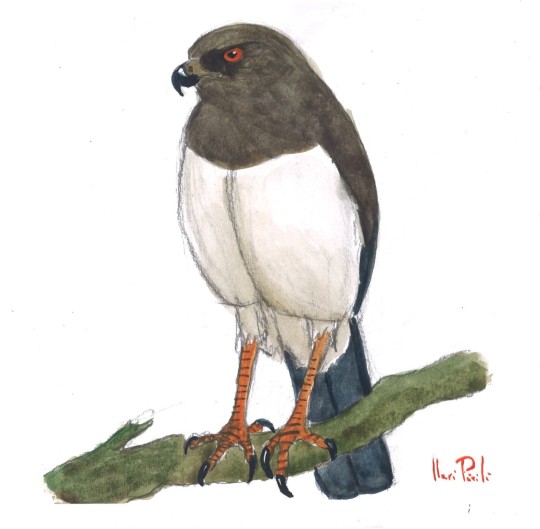
Aviraptor by @otussketching
Eurotrochilus, known from Germany during the Oligocene, is a prime example of this phenomenon: it looks almost identical to living hummingbirds, but - unlike living hummingbirds - it was in Europe, not the Americas! Though it wasn't quite a modern hummingbird, having long finger bones like ancestral forms, it had the adaptations needed for feeding on nectar and hovering while foraging for food. As a pollinator, it would have been a key component of the forest ecosystem, helping to pollinate flowering plants and keeping the forest growing. It was also exceptionally common, and may have lead to many plants co-evolving with hummingbirds in the Eastern Hemisphere - so that when hummingbirds disappeared from the region, the niche was left open for the passerine Sunbirds to one day fill it.
We also start to see more and more flighted birds of prey, like Aviraptor. Though small in size, it had long slender legs and sharp talons, and was thus the first raptor adapted for eating other birds as prey - to capture them in the air mid-flight. Sure, it mainly ate small ones, but we all have to start somewhere! And, with all of those lovely hummingbirds and early passerines and barbets around, it certainly had enough food to eat.
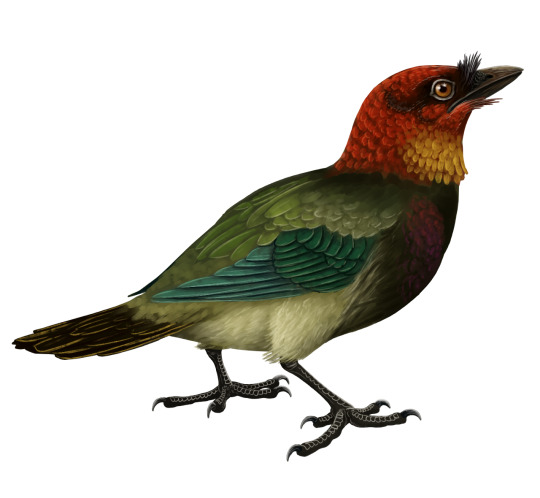
Rupelramphastoides by @drawingwithdinosaurs
Yep, I said barbets - the earliest known barbet-like bird comes from the Oligocene European Forests, Rupelramphastoides. One of the smallest members of the Toucan-Barbet group, it had a lot of very modern traits from the group for its early evolution - including long and slender foot bones like living Toucans! It had a small beak, like barbets, and squat wings for flitting about between the trees. Like its living relatives, it probably ate fruit - which would have been plentiful - as well as insects.
Wieslochia, which I discussed on Passerine day, was also present in these forests - it was just a great place for modern tree-dwelling birds to really get their start! Relatives of hoopoes and hornbills, like Laurillardia, were also present - and had long wings and tails, probably for display in addition to movement. Palaeotodus was present in these forests as well as in the savannah, indicating that it was flexible in its preferred habitat - like the living todies of the Caribbean today. Why todies today are only limited to the Caribbean islands, however, remains a mystery.
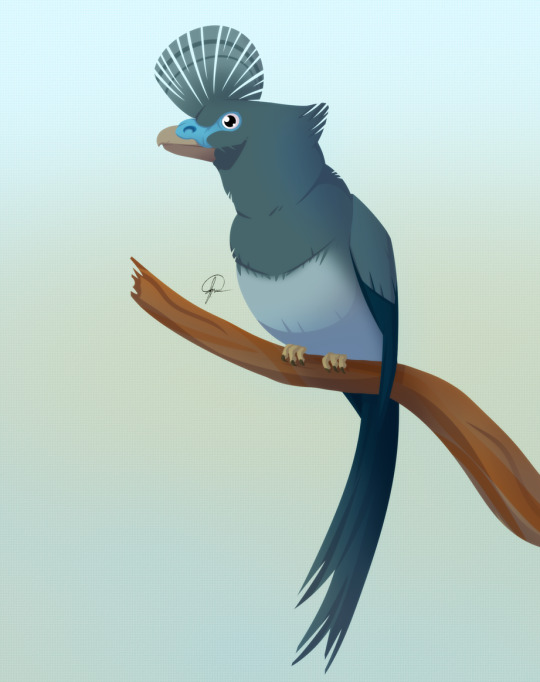
Oligocolius by @quetzalpali-art
Mousebirds haven't been limited to their modern range yet, either! Though not a Sandcoelid, Oligocolius was a weird Mousebird with the hooked bill of a modern parrot! So, clearly, Mousebirds were experimenting with lots of different niches prior to the modern day - and this is a neat example of convergent evolution to boot! It had a crop, unlike its living relatives, which allowed it to digest tougher plant material. It was common in its environment, found both in the forests and in more lacustrine and coastal areas, indicating it was flexible in this changing world - an extremely helpful adaptation as the ecosystems evolved!
Primotrogon, an early relative of trogons, breaks the pattern of "Like Modern Relatives but Slightly Off" that we've been seeing with these birds - unlike living trogons, it had long wings, a short tail, and small eyes! In addition to it's weirdness, we actually know the color of this bird - it had green secondary coverts, with grey secondaries and primary coverts, though the color of the primaries is not known. Given the rareness of green in animal colors, but how commonly it comes up in birds, this is another example of that phenomenon!
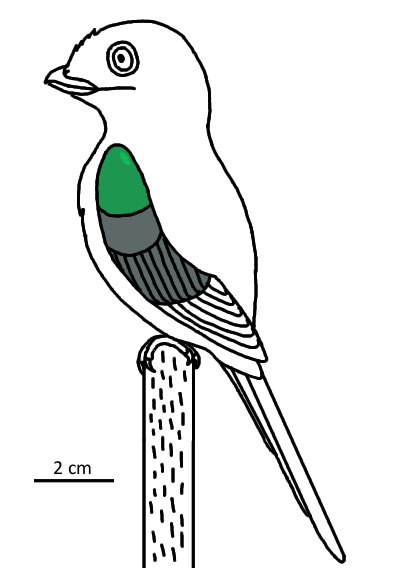
Primotrogon by @albertonykus
Tree dwelling birds aren't the only birds that live in forests, and they aren't the only ones that underwent radiation during this period of environmental change. A weird group of "shorebirds", the Buttonquails, first appears in this ecosystem in the form of Turnipax. Like quails, they are small round ground dwelling birds, but weirdly, their closest relatives are gulls and sandpipers! Turnipax seems to have already been much like its modern relatives, and its possible that the lower diversity of landfowl allowed other avian groups to fill these niches. Rupelornis, a relative of albatross, also lived in the forests of this time - and probably was an ocean going bird, living like modern storm petrels and plucking food carefully from the surface of the water. Like other sea birds, it may have been in forest habitats for the protection - for nesting, rearing young, or other activities. It's a lot easier to hide in the trees than it is to hide at the beach!
This time of environmental turmoil gave dinosaurs new opportunities to diversify - and required flexibility to do so, as the landscape ebbed and flowed between savannah and forest much as it does today. Alas, the climate would not remain stable, and as we continue through the Cenozoic, more and more ecological turmoil will continue to have lasting effects on the evolution of living dinosaurs.
Sources:
Mayr, 2022. Paleogene Fossil Birds, 2nd Edition. Springer Cham.
Mayr, 2017. Avian Evolution: The Fossil Record of Birds and its Paleobiological Significance (TOPA Topics in Paleobiology). Wiley Blackwell.
38 notes
·
View notes
Text
the fabled personal Bracken hc list..
mostly regarding biology, its relationships w/ other entities… etc... mostly just me yapping about brackens with 0 linearity
A Bracken is a collection of various recycled forms of plantlife that gathered underground into a (mostly) living being during its ‘gestation’.
During that process, it collects and absorbs some features from the plants, creatures (carrion that decomposed nearby the Bracken’s gestation spot) and minerals around it until it has developed enough to begin developing ‘thought’.
Regarding the carrion that the Bracken passively absorbs; in many cases, it simply results in differing aesthetics, patterning, and spinal structure*. If a Manticoil were to die and decompose, untouched, near a Bracken's gestation site, the Bracken may passively become more birdlike; a small beak, hooked claws (in adulthood) and clusters of thick, downy feather-like foliage closer to the skin than a typical Bracken might sport. (*Spinal structure refers to the leaves and foliage that tend to root into the Bracken's back, typically dominating the spine, collarbone, and ribcage sections of the body.)
Typically, a Bracken is made up of various different types of fungi coexisting, a species of fan-leafed plant which evolved alongside Brackens (which usually make up their spinal structures), and several small creatures (usually beginning during the Bracken’s juvenile phase) occasionally as large as a small mouse that take care of any debris, foreign liquids, or otherwise unnatural substances/materials that could injure the Bracken. Examples of small symbiotic entities include: newborn Bunker Spiders, newborn to adult manticoils, (mundane) insects and, very rarely, a Mask*. (*See the end notes.)
It’s not uncommon for a Bracken to ‘host’ a Bunker Spider’s offspring (NOT sexually), though in very small quantities; one or two maximum in return for the strong webbing that will eventually solidify into a strong, durable ‘hide’, regardless of whether or not the webs are left inside or outside of its body.
Some Bracken variations have low-strength sedative properties, while others have fairly weak vestigial poisons or venoms as a result of where they had gestated and the environment's effects.
A Bracken only ‘hatches’ on any singular planet twice every decade. It’s unknown as to why they are so sparse, though it’s theorized that the pollution and general desolation of their environments disables most of their ability to survive once they are exposed to the outside world.
On this topic; a Bracken is very fragile during the beginning of its life, displaying birdlike behaviors and croaking, rattling (a soft sound, one distinct to the Bracken species alone, typically described to sound like the click of one’s tongue and the scrape of bone against ceramic in quick succession) and huddling within its ‘nest’ until another creature appears, at which point a symbiotic relationship will be formed.
A Bracken cannot move easily on its own until after a week and a half has passed since its hatching. This is because it is still in the process of developing limbs solid enough to support its weight; a majority of its body by this point is still a buildup of roots, fungi, and plant life.
A Bracken, during its newborn phase, adopts the behaviors of those it is raised by until adulthood—after which, it wanders off on its own and usually into abandoned facilities, where they develop their common hunting behaviors. Few cases have been recorded wherein a Bracken chose to stay with those that raised it.
For example, regarding the Bracken’s behavioral mimicry, if it is raised by a pack of Eyeless Dogs, it will breathe deeply and slowly and hunch further than it usually will in adulthood. Its steps will be heavy, as though it weighs far more than it does (even though it is, truthfully, the size of a human child by this point), and it will occasionally clatter its jaws in a manner best ascribed as similar to a toucan, down to the sound alone. It is thought that the clattering behavior is used to mimic how the Dog’s large teeth click against one another during roughhousing.
A newborn Bracken can subsist off of sunlight for about one week before the demand for meat begins to truly kick in. If it is found before the ability to maneuver itself develops, the entity that will raise it will instead carry it regardless of any behaviors or aggression it should display instead. It is unknown if this occurs because of any unnatural influence from the young Bracken itself, or if it is simply instinctually hard-wired into the wildlife that they must care for the hatchling for however long it stays. Some have said that the strange behavior is rooted within the fungi developing in the Bracken's body; an evolved version of a parasitic fungus, engineered to influence another's thoughts during the war that took place roughly five hundred years ago which was since thought to have devolved into harmless forms over the years, regardless of the planet or environment. This is only a theory, however.
#lethal company#lethal company bracken#I PRESSED THE WRONG BUTTONNFUCKKKKK ..#part 2 coming soon i fucking GUESS#this is a cry for helpf#headcanons
18 notes
·
View notes
Note
i want that ramble about your spec bio creatures so bad theyre such neat lil dudes
OH DUDE, TYSM!!
i have some quick facts about all 3 so far! i'll post that novel below ^^
...
a few notes -
I am TOTALLY up for criticism on this project. It's my first serious spec bio thingy and I am still very green to the subject lol
The planet they inhabit is called Ieyora (eye-yore-uh) IV. It's the fourth planet from the sun in its solar system, and the flora is autumn-coloured all year around, which is why the animals have yellow, orange, and red camouflage.
Ieyora IV has quite a bit of volcanic activity. Animals living in arctic environments sometimes use heat vents formed in mountain ranges to keep their eggs warm during nesting seasons.
I call the extra limbs palps, like on a spider. Some are fully functional like on the Soffbeast, and some are mostly vestigial or nearly undetectable like on the Ieyotitan and Ieyorapteryx. No Ieyoran animal has more than 6 limbs.
All three species I've worked the most on are all related by a common ancestor, they're like cousins.
The planet doesn't have a resident dominant species, such as humans on Earth.
Species Quick Facts
Ieyorapteryx
- Semi aquatic (akin to an otter)
- Especially strong lower body
- Peculiar beak-like mouth (similar to a pufferfish)
- Palps no longer visible
- Strong climbers
- Forelimbs similar to those of a raccoon or rodent
- Webbed toes, except for "thumb"
- Reproductive and maturation system similar to that of a frog, needs water in order to lay eggs and has a fully aquatic first few weeks of life
- Adults as large as a whitetail deer
- Patterning appears to vary due to location of the ecosystem they inhabit (camouflage)
- Found in sparsely forested temperate/cold regions
- Highly social, docile creatures
- Waterproof feathers, similar method to that of a duck
- Nostrils and ears close comparably to a seal when diving or staying underwater for long periods of time
- Can spend approximately 2 hours submerged
- Feathers thicker on upper body and back than lower body
- Rears up on back legs when sprinting
- Feathers on the back of its head act similarly to a cockatiel
- Produces a wide range of clicking noises with its beak and tongue, sometimes also screeching, among many other sounds
Ieyotitan
- Fully terrestrial
- Males have a toucan-like pattern on their snout
- Found in mountain ranges and arctic regions
- Builds nests out of its own fur and plant matter, using sticky saliva to ensure structural integrity
- Lives in same sex pairs, only mixing if closely related or during mating season
- Short yet thick feathering
- Beak similar to Ieyorapteryx
- Technically omnivorous in their youth, sometimes digging for roots
- Fairly territorial
- Bonded pairs show high amounts of physical affection for one another, grooming and playful behaviour is often observed
- Males show perceived homosexual behaviour to ensure loyalty to each other and often act as wingmen
- Pursuit predators
- Females tend to be more aggressive
- Produces squeaking, mewing, and a low rumbling sound in their throat, referred to as "trilling", sometimes strong enough to shake the ground
- Observed quietly purring to themselves
- Makes an ear-shattering hissing/shrieking noise when threatened
- Scrapes the ground with scent glands on their palps to mark their territory
- Also have scent glands under their chin
- Extremely hygienic animals
- Split tongue to aid in tracking
- Small ridge on back for temperature regulation
- Padded back feet
Soffbeast (Sophbeast)
"Soffbeast" is an affectionate name for these creatures, being a play on softbeast. The "t" is dropped because their fur is so soft, the letter makes too harsh of a sound to describe it. The first part of their original common name, Sophbeast, was the surname of the scientist who first studied them.
- Second largest Ieyoran carnivore
- Lives in arctic and tundra regions
- Produces low throat vibration noises and growls
- Horrifyingly loud shriek
- Notable sexual dimorphism
- Tunnels underground to make a safe den for their offspring
- Scent glands under chin and on palps
- Mate for life
- Very, very quick on their feet
- Seasonal migration
- Often completely silent
- Padded feet
- Dozens of specialized teeth within their beaks for tearing flesh and grinding bones
- Completely terrestrial
- Known to stash food in their dens
- Territory can overlap with Ieyotitans, causing some tension
- Crazy strong jaws
- Tail is used for self defense and most likely temperature regulation
- Uncommonly observed in the wild, though assumed to be of low concern
- Sometimes utilizes heat vents for a warm spot to nap or build a den near
i have a bit more, tryna spread out the info dumps though lol
looking to post more art soon >:D
#ieyora iv#fantasy creature#speculative biology#digital artist#artists on tumblr#oc#my oc#fantasy#furry#worldbuilding#speculative evolution#paleoart#dinosaurs#original character#oc design#character design#creature design
9 notes
·
View notes
Text
THE PLUSHIE POST PT. 2 (the little guys)
The small but still very important fellas

Tango - Jellycat Bodacious Beak Toucan
Bought January 24 in a closing down sale. I actually wanted him for Christmas but didn’t ask for him in the end, so when I saw him in the sale I was like “hell yeah £5 off”. He’s so silly and cute. Bird plushies go hard

Maple - Wrendale Designs Fox
Bought April 2023. Honestly it was love at first sight with her. She’s really soft and has got a lil pudgy tummy. Also her fur actually looks like the artists, Hannah Dale’s, art style?? If you know who I’m talking about then you’ll know what I mean. My fave fox related item, and I have a lot of fox things lmao (also her name is officially Autumn but like that’s my cats name, it’s gonna get confusing, so I call her maple)
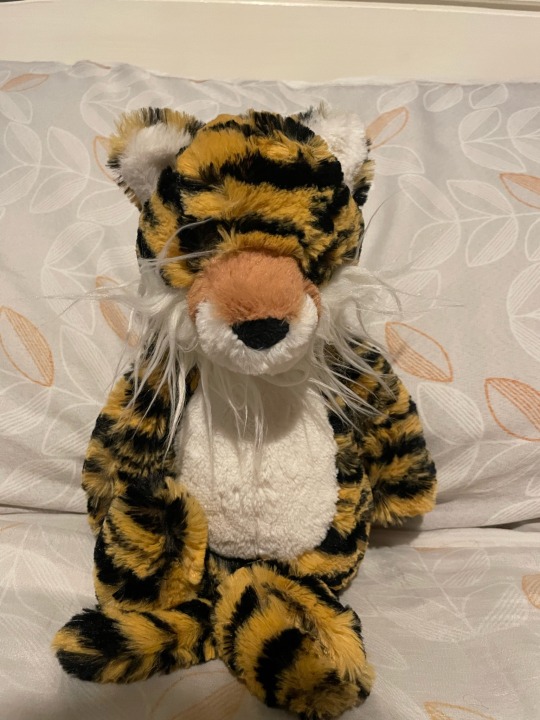
Sebastian - JellyCat Bashful Tiger (Medium)
Bought June 2022 as a reward for finishing my A Levels. He’s usually the plush I take with me on holiday to sleep with, since Cookie Dough is a bit too big. He’s very soft and I love his long tail. A handsome boy :)

BASTARD aka Toon Link Plush (Wind Waker HD edition)
The absolute creature of creatures. A Christmas present from 2022. His peak moment was when I put the tip of my pride flag under his tunic and carried him around at the local Pride Parade. I hate him, I want to cherish him. Also my cat hates him for some reason it’s so funny
And now, for the final plush, the one the only…
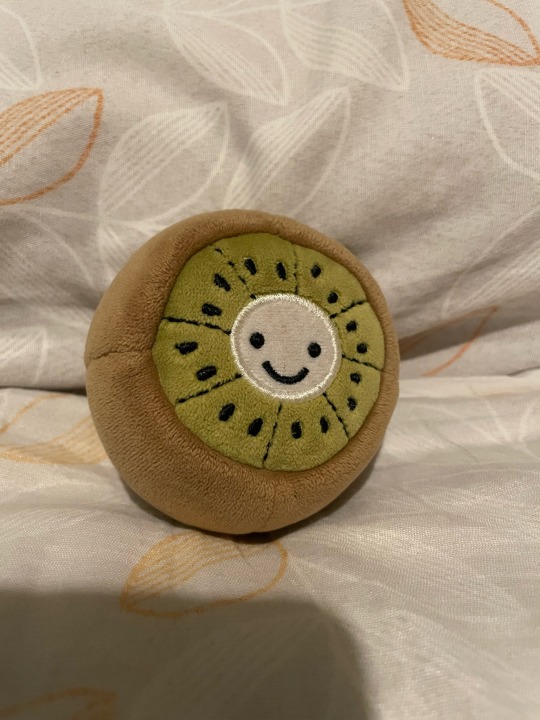
KWEEBLY - JellyCat Fabulous Fruit Kiwi
The smallest here, but he’s had the biggest impact on my life. I bought him on a whim around the 28th August 2021 and he proceeded to be the biggest comfort I could have ever asked for. I carried him around in my bag for most of Year 13 when my mental health hit rock bottom. He’s been squeezed, thrown at walls, bitten etc etc but I love him dearly. I don’t need his assistance as much now, as I’m in a better place, but he still sits in my bag just in case. Any of my irls mutuals on here know the absolute icon that is Kweebly, dude was a mini celebrity in the sixth form common room. Also my acnh island is named after him
I love my plushies smh and obviously I have more but these are the ones I usually cuddle or take with me to places
18 notes
·
View notes
Text
All of these are suggested options!
I'll let this run for a week since one day is too little time but I have no like three day option :'D
3 notes
·
View notes